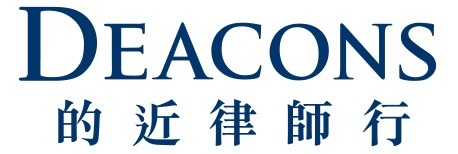More than one month has passed since the launch on 4 July 2022 of the long-awaited connect scheme for trading exchange-traded funds (ETFs) between Mainland China and Hong Kong (ETF Connect). While ETF managers have been assessing how they can benefit from the scheme to enhance their cross-border product offering, a few limitations of the ETF Connect scheme are noted.
One of the common concerns is the stringent eligibility criteria, making it quite difficult for an ETF to be included in the scheme. At the initial stage, the Shanghai and Shenzhen stock exchanges have only added four Hong Kong-listed ETFs that can be traded by Mainland investors, and 83 Mainland-listed ETFs can be traded by Hong Kong and international investors via ETF Connect. For details about the ETF eligibility criteria, please refer to our client alert.
In addition to the scope of the ETF Connect being narrow at its initial launch, ETF managers are also wary about the inability for them to market their ETF products. Since ETF Connect is implemented by way of inclusion of eligible ETFs into the existing Stock Connect framework and infrastructure, it is only an expansion of the existing trading facility for mutual access of the Mainland and Hong Kong stock exchanges. In other words, the “connectivity” rests with the secondary market trading only. The ETF Connect scheme itself does not enable cross-border sale and marketing of ETFs.
Having said that, it does not mean that it is impossible to market and offer Mainland-listed ETFs to the public in Hong Kong at all. Under the current regulatory framework, fund houses that wish to bring their Mainland-listed ETFs to the Hong Kong retail market will need to get their funds authorised by the Securities and Futures Commission (SFC) in Hong Kong. The following traditional means remain available to them:
- Mainland-Hong Kong mutual recognition of funds (Mainland-HK MRF): Index-tracking ETFs fall within the scope of Mainland-HK MRF. As confirmed in the Frequently Asked Questions on Mainland-HK MRF published by the SFC, Mainland-HK MRF allows investors in the host jurisdiction to make primary subscription and redemption of a fund (including an ETF) approved or authorised in the home jurisdiction, subject to the relevant laws and regulations and its constitutive documents. If the relevant Mainland-listed ETF seeking the SFC’s authorisation in Hong Kong is a physical index-tracking ETF tracking an index which is adopted by another existing SFC-authorised fund or is a plain vanilla index, such application for authorisation of the Mainland-listed ETF can be processed as a standard application, subject to fulfilment of other criteria.
- Streamlined measures for ETFs adopting a master-feeder structure: As discussed in our earlier article (available here), the SFC is prepared to allow an SFC-authorised feeder ETF to invest its assets in an overseas-listed master ETF without the latter obtaining the SFC authorisation. In this connection, the master ETF must be a scheme regulated in a recognised jurisdiction managed by a management company in an acceptable inspection regime or a scheme eligible under a mutual recognition of funds arrangement. A Mainland-listed ETF being eligible under Mainland-HK MRF may therefore be able to rely on the streamlined measures provided other conditions are also met. It means that fund managers can set up and seek the SFC’s authorisation of a Hong Kong feeder ETF which feeds into a Mainland-listed ETF, even though the Mainland-listed ETF is not authorised by the SFC in Hong Kong.

For further information, please contact:
Pinky Siu, Partner, Deacons
pinky.siu@deacons.com




